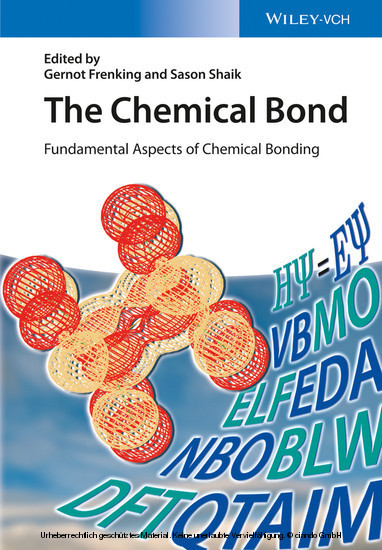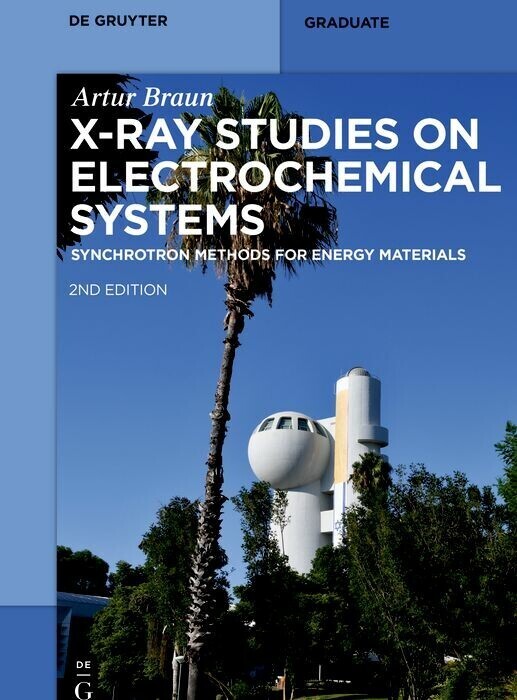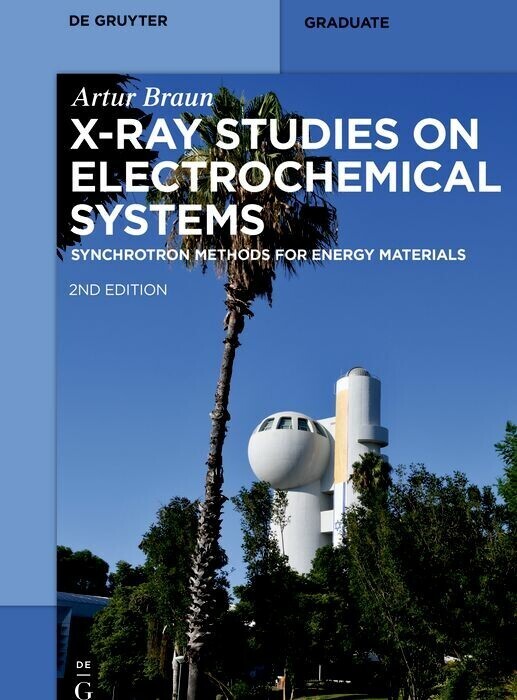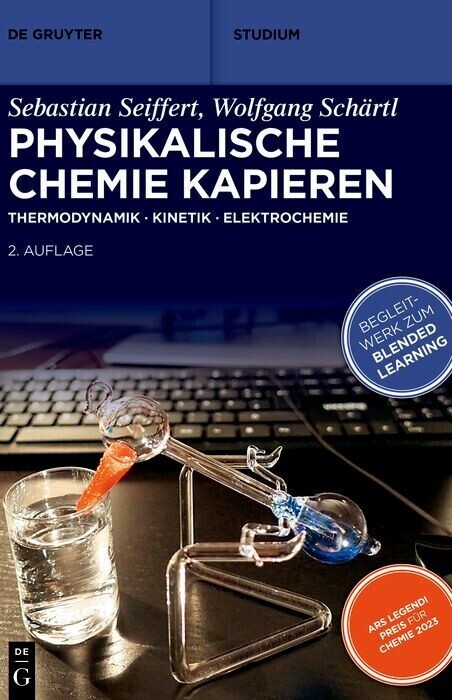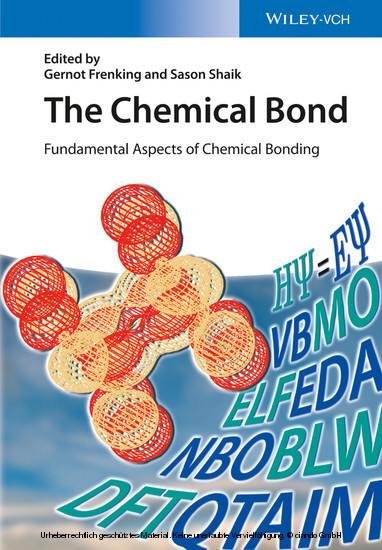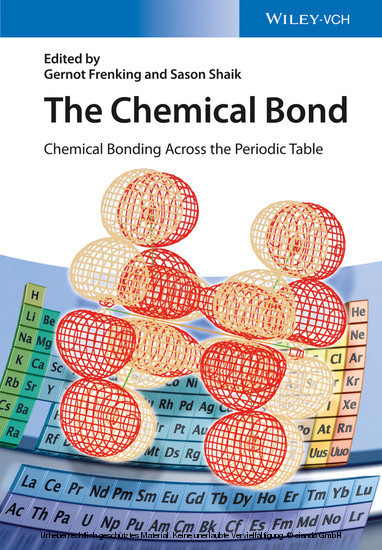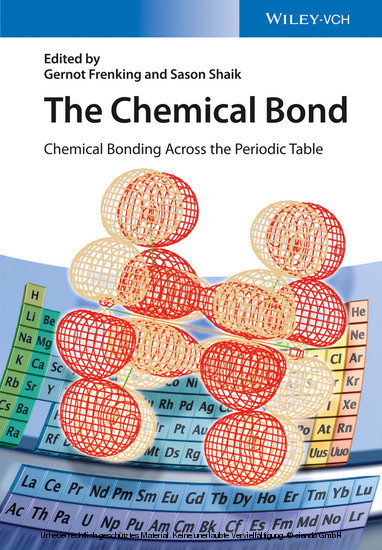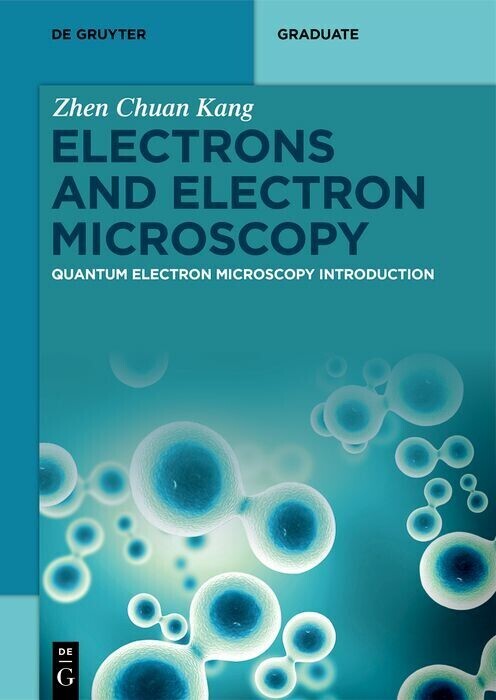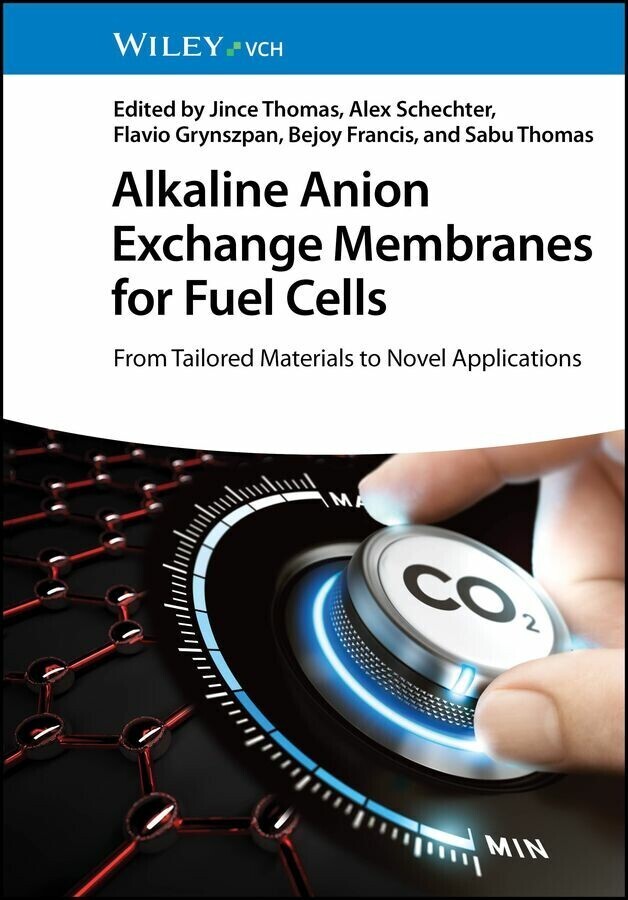The Chemical Bond
Fundamental Aspects of Chemical Bonding
The Chemical Bond
Fundamental Aspects of Chemical Bonding
This is the perfect complement to 'Chemical Bonding - Across the Periodic Table' by the same editors, who are two of the top scientists working on this topic, each with extensive experience and important connections within the community.
The resulting book is a unique overview of the different approaches used for describing a chemical bond, including molecular-orbital based, valence-bond based, ELF, AIM and density-functional based methods. It takes into account the many developments that have taken place in the field over the past few decades due to the rapid advances in quantum chemical models and faster computers.
Gernot Frenking studied chemistry at the Technical University Aachen (Germany). He then became a research atudent in the group of Prof. Kenichi Fukui in Kyoto (Japan) and completed his PhD and his habilitation at Technical University Berlin (Germany). He was then a visiting scientist at the University of California, Berkeley (USA) and a staff scientist at SRI International in Menlo Park, California (USA). Since 1990 he is Professor for Computational Chemistry at the Philipps-Universitat Marburg.
Sason Shaik is a graduate of the University of Washington (USA), where he also obtained his PhD. After a postdoctoral year at Cornell University, he became Lecturer at Ben-Gurion University of the Negev (Israel), where he became Professor in 1988. In 1992 he moved to The Hebrew University where he is Professor and the Director of the Lise Meitner-Minerva Center for Computational Quantum Chemistry.
The resulting book is a unique overview of the different approaches used for describing a chemical bond, including molecular-orbital based, valence-bond based, ELF, AIM and density-functional based methods. It takes into account the many developments that have taken place in the field over the past few decades due to the rapid advances in quantum chemical models and faster computers.
Gernot Frenking studied chemistry at the Technical University Aachen (Germany). He then became a research atudent in the group of Prof. Kenichi Fukui in Kyoto (Japan) and completed his PhD and his habilitation at Technical University Berlin (Germany). He was then a visiting scientist at the University of California, Berkeley (USA) and a staff scientist at SRI International in Menlo Park, California (USA). Since 1990 he is Professor for Computational Chemistry at the Philipps-Universitat Marburg.
Sason Shaik is a graduate of the University of Washington (USA), where he also obtained his PhD. After a postdoctoral year at Cornell University, he became Lecturer at Ben-Gurion University of the Negev (Israel), where he became Professor in 1988. In 1992 he moved to The Hebrew University where he is Professor and the Director of the Lise Meitner-Minerva Center for Computational Quantum Chemistry.
1;Related Titles;2 2;Title Page;4 3;Copyright;5 4;Preface;6 5;References;15 6;List of Contributors;20 7;Chapter 1: The Physical Origin of Covalent Bonding;27 7.1;1.1 The Quest for a Physical Model of Covalent Bonding;27 7.2;1.2 Rigorous Basis for Conceptual Reasoning;30 7.3;1.3 Atoms in Molecules;39 7.4;1.4 The One-Electron Basis of Covalent Binding: H2+;43 7.5;1.5 The Effect of Electronic Interaction in the Covalent Electron Pair Bond: H2;75 7.6;1.6 Covalent Bonding in Molecules with More than Two Electrons: B2, C2, N2, O2, and F2;103 7.7;1.7 Conclusions;116 7.8;Acknowledgments;119 7.9;References;120 8;Chapter 2: Bridging Cultures;125 8.1;2.1 Introduction;125 8.2;2.2 A Short History of the MO/VB Rivalry;126 8.3;2.3 Mapping MO-Based Wave Functions to VB Wave Functions;133 8.4;2.4 Localized Bond Orbitals - A Pictorial Bridge between MO and VB Wave Functions;137 8.5;2.5 Block-Localized Wave Function Method;140 8.6;2.6 Generalized Valence Bond Theory: a Simple Bridge from VB to MOs;141 8.7;2.7 VB Reading of CASSCF Wave Functions;144 8.8;2.8 Natural Bonding Orbitals and Natural Resonance Theory - a Direct Bridge between MO and VB;145 8.9;2.9 The Mythical Conflict of Hybrid Orbitals with Photoelectron Spectroscopy;147 8.10;2.10 Conclusion;150 8.11;Appendix;151 8.12;References;152 9;Chapter 3: The NBO View of Chemical Bonding;158 9.1;3.1 Introduction;158 9.2;3.2 Natural Bond Orbital Methods;160 9.3;3.3 Beyond Lewis-Like Bonding: The Donor-Acceptor Paradigm;179 9.4;3.4 Conclusion;196 9.5;References;197 10;Chapter 4: The EDA Perspective of Chemical Bonding;202 10.1;4.1 Introduction;202 10.2;4.2 Basic Principles of the EDA Method;207 10.3;4.3 The EDA-NOCV Method;209 10.4;4.4 Chemical Bonding in H2 and N2;210 10.5;4.5 Comparison of Bonding in Isoelectronic N2, CO and BF;219 10.6;4.6 Bonding in the Diatomic Molecules E2 of the First Octal Row E = Li-F;224 10.7;4.7 Bonding in the Dihalogens F2 - I2;237 10.8;4.8 Carbon-Element Bonding in CH3-X;240 10.9;4.9 EDA-NOCV Analysis of Chemical Bonding in the Transition State;244 10.10;4.10 Summary and Conclusion;253 10.11;Acknowledgements;253 10.12;References;254 11;Chapter 5: The Valence Bond Perspective of the Chemical Bond;259 11.1;5.1 Introduction;259 11.2;5.2 A Brief Historical Recounting of the Development of the Chemical Bond Notion;260 11.3;5.3 The Pauling-Lewis VB Perspective of the Electron-Pair Bond;263 11.4;5.4 A Preamble to the Modern VB Perspective of the Electron-Pair Bond;268 11.5;5.5 Theoretical Characterization of Bond Types by VB and Other Methods;271 11.6;5.6 Trends of Bond Types Revealed by VB, AIM and ELF;275 11.7;5.7 Physical Origins of CS Bonding;286 11.8;5.8 Global Behavior of Electron-Pair Bonds;291 11.9;5.9 Additional Factors of CS Bonding;294 11.10;5.10 Can a Covalent Bond Become CS Bonds by Substitution?;295 11.11;5.11 Experimental Manifestations of CS Bonding;300 11.12;5.12 Scope and Territory of CS Bonding;304 11.13;Appendix;307 11.14;5.A Modern VB Methods;307 11.15;5.B The Virial Theorem;309 11.16;5.C Resonance Interaction and Kinetic Energy;311 11.17;References;312 12;Chapter 6: The Block-Localized Wavefunction (BLW) Perspective of Chemical Bonding;321 12.1;6.1 Introduction;321 12.2;6.2 Methodology Evolutions;325 12.3;6.3 Exemplary Applications;335 12.4;6.4 Conclusion;356 12.5;6.5 Outlook;357 12.6;Acknowledgements;358 12.7;References;359 13;Chapter 7: The Conceptual Density Functional Theory Perspective of Bonding;370 13.1;7.1 Introduction;370 13.2;7.2 Basics of DFT: The Density as a Fundamental Carrier of Information and How to Obtain It;373 13.3;7.3 Conceptual DFT: A Perturbative Approach to Chemical Reactivity and the Process of Bond Formation;378 13.4;7.4 Conclusions;414 13.5;Acknowledgments;415 13.6;References;416 14;Chapter 8: The QTAIM Perspective of Chemical Bonding;427 14.1;8.1 Introduction;427 14.2;8.2 Birth of QTAIM: the Quantum Atom;431 14.3;8.3 The Topological Atom: is it also a Quantum Atom?;438 14.4;8.4 The Bond Critical Point and the Bond Path;446 1
| ISBN | 9783527664719 |
|---|---|
| Artikelnummer | 9783527664719 |
| Medientyp | E-Book - ePUB |
| Copyrightjahr | 2014 |
| Verlag | Wiley-VCH |
| Umfang | 438 Seiten |
| Sprache | Englisch |
| Kopierschutz | Adobe DRM |

